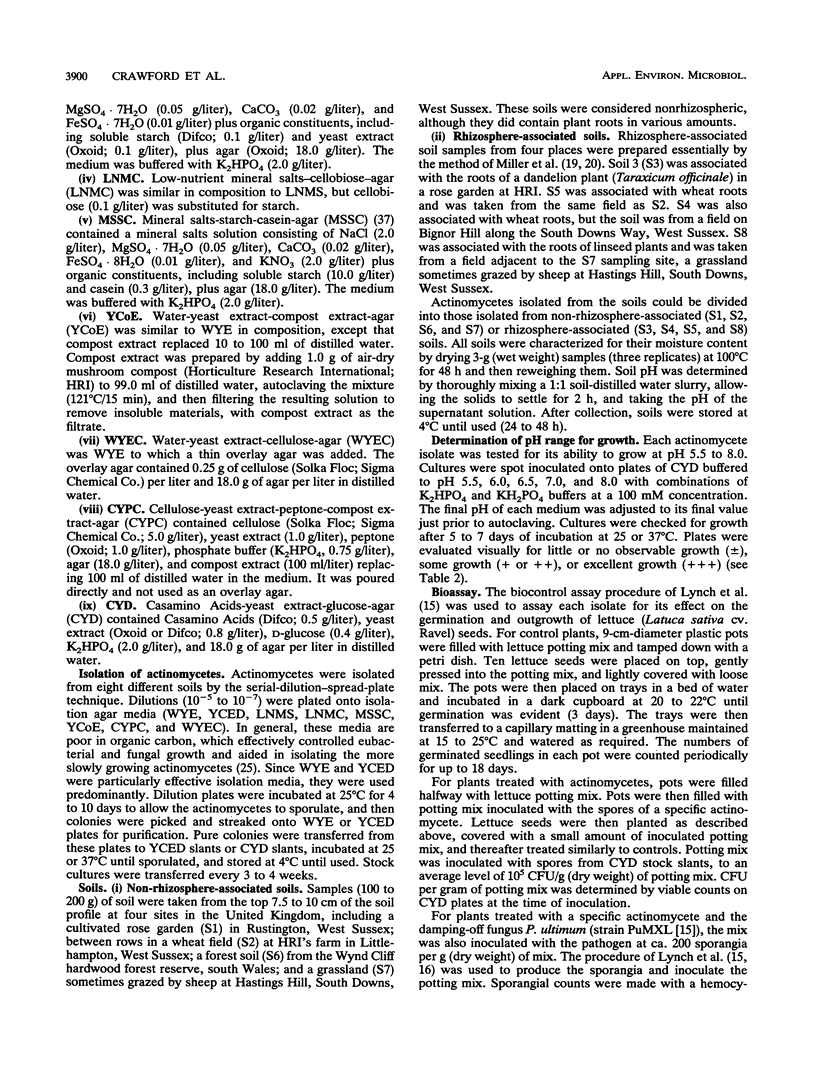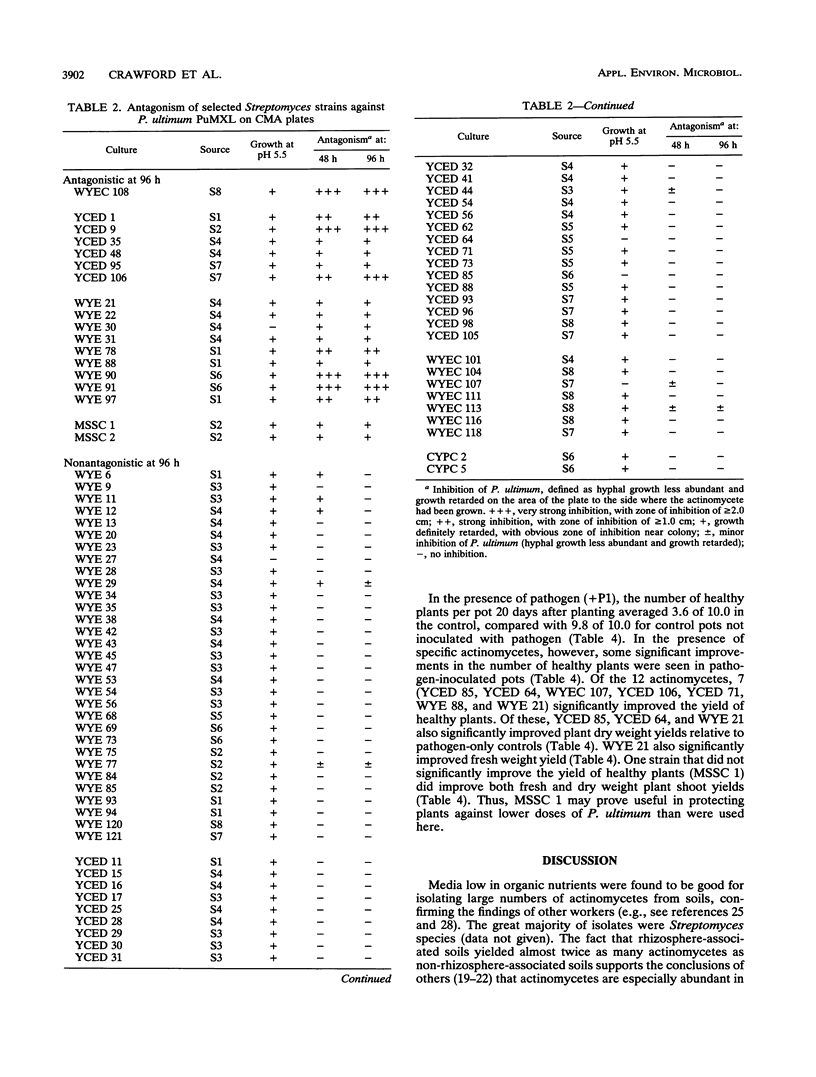Abstract
By use of selective media, 267 actinomycete strains were isolated from four rhizosphere-associated and four non-rhizosphere-associated British soils. Organic media with low nutrient concentrations were found to be best for isolating diverse actinomycetes while avoiding contamination and overgrowth of isolation media by eubacteria and fungi. While all isolates grew well at pHs 6.5 to 8.0, a few were unable to grow at pH 6.0 and a significant number failed to grow at pH 5.5. Eighty-two selected isolates were screened for in vitro antagonism towards Pythium ultimum by use of a Difco cornmeal agar assay procedure. Five isolates were very strong antagonists of the fungus, four were strong antagonists, and ten others were weakly antagonistic. The remaining isolates showed no antagonism by this assay. Additional studies showed that several of the P. ultimum antagonists also strongly inhibited growth of other root-pathogenic fungi. Twelve isolates showing antifungal activity in the in vitro assay were also tested for their effects on the germination and short-term growth of lettuce plants in glasshouse pot studies in the absence of pathogens. None of the actinomycetes prevented seed germination, although half of the isolates retarded seed germination and outgrowth of the plants by 1 to 3 days. During 18-day growth experiments, biomass yields of some actinomycete-inoculated plants were reduced in comparison with untreated control plants, although all plants appeared healthy and well rooted. None of the actinomycetes significantly enhanced plant growth over these short-term experiments. For some, but not all, actinomycetes, some correlations between delayed seed germination and reduced 18-day plant biomass yields were seen. For others, plant biomass yields were not reduced despite an actinomycete-associated delay in seed germination and plant outgrowth. Preliminary glasshouse experiments indicated that some of the actinomycetes protect germinating lettuce seeds against damping-off caused by P. ultimum.
Full text
PDF






Selected References
These references are in PubMed. This may not be the complete list of references from this article.
- Bowles K., Lynch M. These products and procedures prevent needlesticks. RN. 1992 Jul;55(7):42–45. [PubMed] [Google Scholar]
- Broadbent P., Baker K. F., Waterworth Y. Bacteria and actinomycetes antagonistic to fungal root pathogens in Australian soils. Aust J Biol Sci. 1971 Oct;24(5):925–944. doi: 10.1071/bi9710925. [DOI] [PubMed] [Google Scholar]
- STEVENSON I. L. Antibiotic activity of actinomycetes in soil as demonstrated by direct observation techniques. J Gen Microbiol. 1956 Oct;15(2):372–380. doi: 10.1099/00221287-15-2-372. [DOI] [PubMed] [Google Scholar]
- Sardi P., Saracchi M., Quaroni S., Petrolini B., Borgonovi G. E., Merli S. Isolation of endophytic streptomyces strains from surface-sterilized roots. Appl Environ Microbiol. 1992 Aug;58(8):2691–2693. doi: 10.1128/aem.58.8.2691-2693.1992. [DOI] [PMC free article] [PubMed] [Google Scholar]


